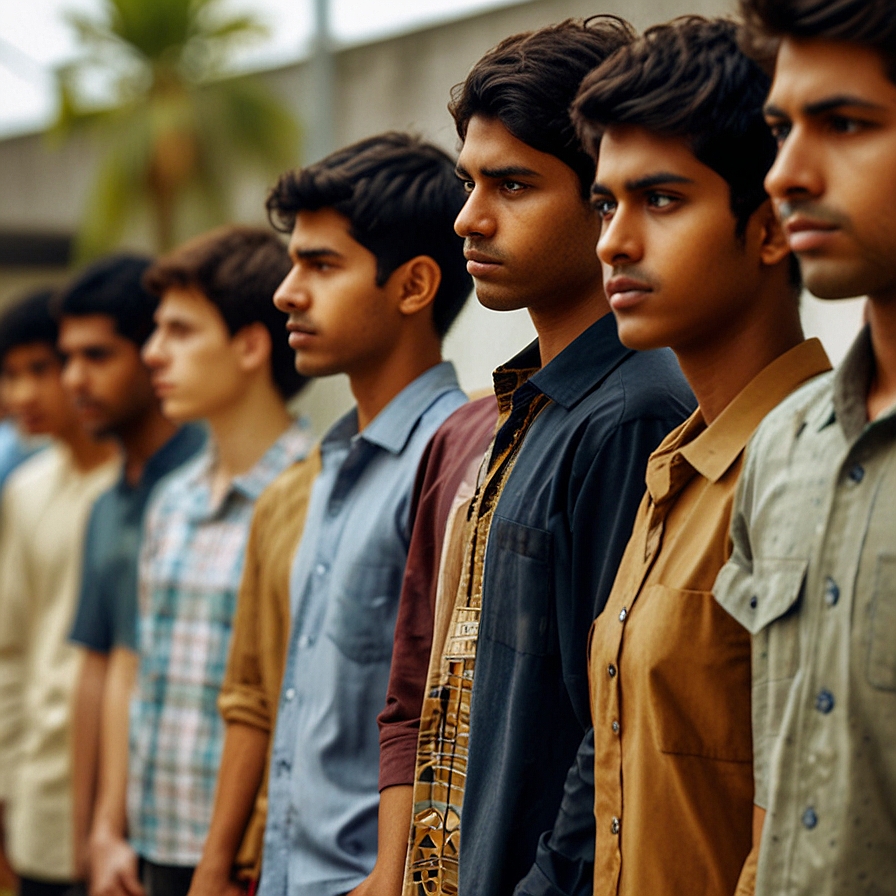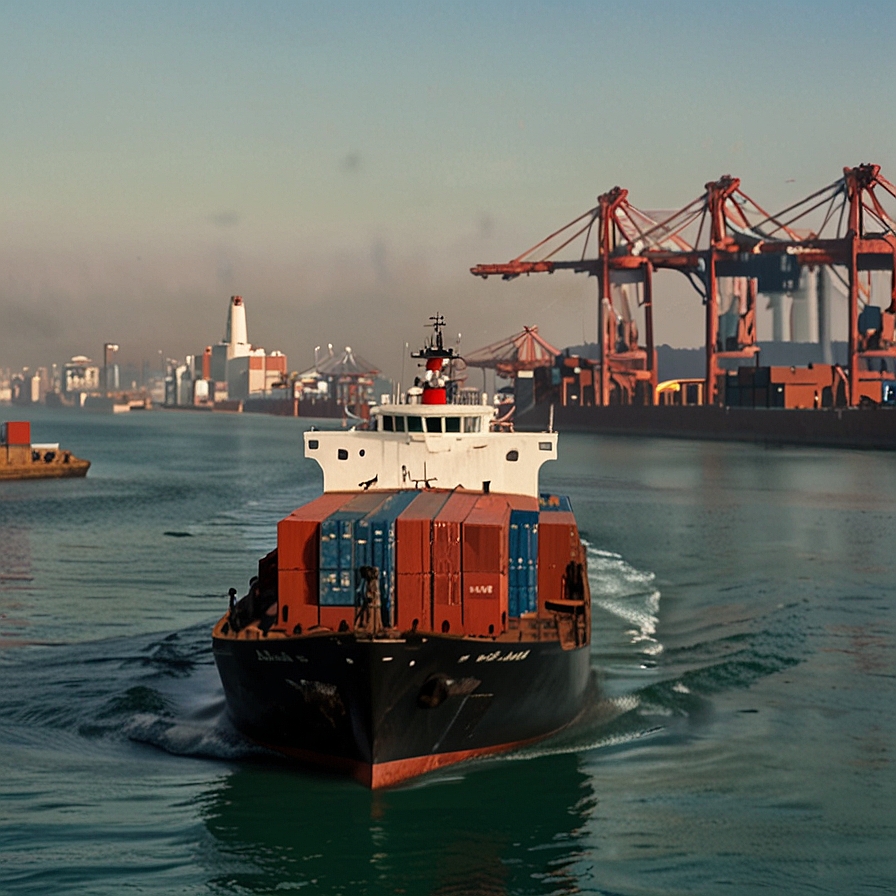The theme of the budget of India for the fiscal year 2024-25 is “Viksit Bharat,” which means Developed India.
This will be an inclusive growth and economic stability-oriented budget with technological advancements and robust defense.
This is an all-inclusive analysis that goes into major features and allocations of the budget in respect of agriculture, employment generation and skilling, MSMEs, benefits extended to all classes, urban development, energy and infrastructure, research, taxation, and defense.

Key Features and Allocations
1. Agriculture and Allied Sectors
Agriculture is one of the prime sectors in India, with a large segment of its population engaged in the same. It has mentioned various measures for modernizing this sector and making it more resilient in the Budget. These would relate to the production and supply of vegetables as follows:

Vegetable Production & Supply Chain: With the promotion of Farmer Producer Organizations, cooperatives, and startups, there will be better management of vegetable supply chains from collection to storage and marketing. There will be reduced losses after harvests and better prices for farmers.
Release of New Varieties: Release of 109 new high-yielding and climate-resilient crop varieties is one strategic move that could increase agricultural productivity, thereby further reducing the negative impacts of climate change.
National Cooperatives Policy: The policy envisions systematic development of the cooperative sector so that there will be better organization and efficiency in carrying out agricultural activities.

Atmanirbharta in Oil Seeds: Thereafter, the government does contemplate self-sufficiency in oilseeds like mustard, groundnut, sesame, soybean, and sunflower to reduce import dependence and stabilize domestic prices.
Reform in Agriculture Research: There will be an overall review of agricultural research to increase productivity and for climate resilience, thereby making agriculture sustainable.
Natural Farming: The aim of onboarding 1 crore farmers in natural farming, to be driven by certification and branding, goes in for supporting sustainable agriculture with reduced dependence on chemical inputs.

Shrimp Production & Export: NABARD financing to shrimp farming, processing, and exports may spur rural incomes and foreign exchange earnings.
Digital Public Infrastructure for Farmers: The digital crop survey in 400 districts and issuance of Jan Samarth-based Kisan Credit Cards will bring transparency and smoothen all agricultural processes.

2. Employment and Skilling
The critical factors in reaping the demographic dividend of the country are employment generation and skill development. The budget has initiated several schemes for enhancing job creation and skill development:

Participation of Women in Workforce: Set up of working women hostels and crèches in collaboration with the industry to increase participation of women in workforce.
Schemes for Youth Employment:
Scheme A: Incentives to first time employees, beneficiaries: 30 lakhs youths.
Scheme B: Generation of manufacturing jobs. .
Scheme C: Reimbursement of EPFO contribution made by the employer to generate 50 lakhs jobs

Skilling program: In five years, the government would look to skill 20 lakh youth, upgrade 1,000 ITIs, and realign course content in tune with industry needs. All this will enhance the employability of the youth to better respond to the needs of the emerging job market.
Loans for Education and E-vouchers: Arrangements for financial support for higher education in the form of loans up to ₹10 lakh and direct e-vouchers to 1 lakh students annually will make education more easily accessible and affordable.
3. Social Justice and Human Resource Development

The emphasis is given to social justice and human resource development by:
Purvodaya: Inbuilt economic opportunities in the States of Bihar, Jharkhand, West Bengal, Odisha, and Andhra Pradesh to ensure balanced regional development.
Woman Schemes: More than ₹3 lakh crore stipulated for various schemes meant for the empowerment of women.
Pradhan Mantri Janjatiya Unnat Gram Abhiyan: Socio-economic upliftment of tribals through concentrated development programs.
India Post Payment Bank Expansion: Over 100 new branches are envisaged in the North East for improvement in financial inclusion.
4. Manufacturing and Services
Manufacturing and services are the two drivers of economic growth and employment:

National Industrial Corridor Development: Twelve industrial parks are proposed to boost manufacturing and industrial activities.
Internship Opportunities: One crore youth are likely to get work experience of internship in 500 top companies during a period of five years, making them employable.
Rental Housing for Industrial Workers: The needs concerning the housing requirements for industrial workers are proposed to be met through dormitory-type accommodations in PPP mode.
Credit Support to MSMEs: Enhanced credit guarantee schemes, mandatory onboarding in Trade Receivables Discounting System, new assessment models, and increased Mudra Loans limit shall all support the MSMEs.
5. Urban Development
Urban development initiatives that seek improvement in living standards and infrastructure in cities:

Stamp Duty Reduction: Providing incentives to States to reduce stamp duties for properties purchased by women to encourage asset ownership by women.
Street Vending: A plan to have 100 weekly ‘haats’ or street food hubs on a weekly basis to promote the local economy.
Transit-Oriented Development: Proposes 14 large cities so that the growth of cities is sustainable.
Water Management: Water supply, sewage treatment, and solid waste management projects are encouraged to improve urban living.
PM Awas Yojana Urban 2.0: It envisages providing affordable housing for the urban populace with the target investment of ₹10 lakh crore to meet the housing requirements.
6. Energy Sector

The energy sector is the very underpinning of sustainable development and economic growth.
Bharat Small Reactors: The setting up of small modular reactors for nuclear energy will bring about diversification in sources and increase energy security.
Pumped Storage Policy: Joint venture for an 800 MW plant signifies commitment to RE and energy storage solutions.
Energy Audit and Transition: Investment grade energy audits will be provided, and support will be given to micro and small industries for cleaner forms of energy, thereby driving energy efficiency and sustainability.
7. Infrastructure

Infrastructure development is important for growth, and the Budget supports the sector with sizeable allocations:
Inter-state resource allocation: ₹1.5 lakh crore shall be ensured for balanced regional development of states.
PMGSY Phase IV: The Pradhan Mantri Gram Sadak Yojana has the objective of all-weather connectivity to 25,000 rural habitations that would improve access to markets, healthcare, and education.
Irrigation and Flood Mitigation: Projects of ₹11,500 crores in states like Himachal Pradesh, Assam, Sikkim, and Uttarakhand shall serve the dual purpose of enhancing water availability and mitigating flood risks.
8. Innovation, Research & Development

The budget lays focus on innovation and research as the drivers of economic growth and the ‘Make in India’ initiative towards technological advancement.
Anusandhan National Research Fund: Operationalization of the fund with a view to supporting basic research and prototype development to inculcate a culture of innovation.
Space Economy: The Budget has proposed a ₹1,000-crore venture capital fund for the space industry that clearly shows commitment towards expanding India’s footprint on research in space and its commercialization.
Tourism Development: In this line of thinking, various initiatives at religious and cultural sites, including the Vishnupad Temple Corridor, Mahabodhi Temple Corridor, and other projects in Odisha, aim at increasing tourism and thereby generating employment.
9. Next Generation Reforms
The budget makes provisions for the following next-generation reforms to achieve improvements in governance and economic resilience.

Land Records Management Information System: In that line of thinking, to have smooth land records, eliminate disputes, and bring in transparency, Bhu-Aadhaar for all lands and GIS mapping have been proposed under the Bhu-Aadhaar initiative.
Climate Finance Taxonomy: More mobilization of capital for climate adaptation and mitigation shows commitment to sustainable development.
NPS Vatsalya: A contribution plan for the guardians of minor children to bring financial security to the doorstep of children.
Data Governance: Better data collection and management are to lead to better decision-making and governance.
10. Taxation

Tax reforms in the budget, which will reduce the complexity of tax, are to bring relief to citizens.
Customs Duty: Changes mooted in a range of areas—from mobile phones and gold and silver to shrimp feed, solar cell manufacturing, and critical minerals—to get more domestic manufacturing and exports out of these sectors.
Direct Tax Proposals: Simplified tax regimes, increase in the standard deduction for salaried employees, rationalization of capital gains tax—all this and more in an endeavor to bring a round of cheer to taxpayers and possibly attract some foreign investment.
Corporate Tax Adjustments: Reduction in rates for foreign companies, support to domestic cruise operations—all these make India an attractive destination for business and investment.
11. Defense Sector

National defense is one of the most important areas that was given due attention in this budget.
The budget earmarks sufficient funds for developing and modernizing the defense capabilities of our nation. An amount of ₹4,54,773 crores has been provisioned for Defense. It shows the commitment towards strengthening national security.
Other main initiatives include enhancement of defense capabilities through procurement and research, with a focus on new technologies, support for indigenous manufacturing to ensure a robust, self-reliant defense sector. It also emphasizes on laying a strong foundation for the India-Israel Strategic Partnership.
The Tech Sector

The Indian budget speech of 2024-2025 is focused on massive investments and a few other steps oriented towards making the tech sector strong. Special initiatives are mooted in relation to artificial intelligence and research and development.
All these will be oriented towards creating an environment where innovation is encouraged, with further stimulus to economic growth, characterized by competitiveness in the international scenario. In this, one of the main things outlined in the budget is the review of the operationalization of the Anusandhan National Research Fund.
This fund is to be used for providing support for basic research and prototype development aimed at ensuring that foundational scientific discoveries find practical, commercial applications. The government is planning to provide support to private sector-driven research and innovation on a commercial scale through a significant financing pool of ₹1 lakh crore.

The budget, in a way, is very strong on space economics too. In a move that signals the strategic and economic potential of space exploration and technology, the government announced the establishment of a venture capital fund with ₹1,000 crore.
This fund would help scale up the Indian space economy five times in the coming decade and increase investments in space technology and related industries.
Added to these specific funds, the Budget takes one to broader reforms that would enhance the ecosystem of innovation and R&D. These include land-related reforms to transit land administration, planning, and management in rural and urban areas. Such reforms are expected to make it easier to establish infrastructure necessary for high-tech industries and research facilities.

The attitude of the government towards AI is best seen through several measures that it has put forward to offer an enabling environment for the development and application of AI.
Among the major considerations is the establishment of a sound framework of data governance, for it forms the backbone for artificial intelligence research and applications. Improved collection, processing, and management of data will make the development of AI algorithms and systems better, more accurate, and effective.
The budget also underlined the fact that skilling and education are the drivers of technological advancement. A massive allocation of ₹1.48 lakh crore for education, employment, and skilling has been provided. This will make available a workforce that is appropriately skilled to function in a tech-driven economy and ensure that India can use its demographic dividend towards fueling the growth of its tech sector.
It also plans to revamp existing platforms like the e-shram portal; the government is likely to integrate it with other databases. This shall create a comprehensive and one-stop solution for employment and skilling services. This effort is likely to bring about much better matching between job seekers and opportunities in the tech sector; it will therefore address the growing demand for skilled professionals in AI, machine learning, and data science.
It also talked about the necessity of next-generation reforms for maintaining high growth with employment opportunities. In its integration with raising the productivity of all factors of production—land, labor, capital, and entrepreneurship, aided by technology as an enabler—it would help bridge inequalities and raise total factor productivity. These next-generation reforms shall be of critical aid in making a model of sustainable and inclusive growth that surely will benefit all sections of society.
The Budget Speech of 2024-2025 reiterated a multifaceted strategy aimed at the building of India’s tech sector, oriented towards AI and R&D. Bigger funding for research, space economy initiatives, data governance frameworks, and skilling programs envisions a robust environment for technological innovation. The main motive behind these measures is to help India retain its top position in the global tech scenario, driving economic growth and improving the quality of life for the Indian citizens.
Budget 2024: The Good, the Bad and the Ugly
This Union Budget 2024 came with much fanfare, promising to be a game-changer. But did the expectations really pan out? Let’s break it down.
The Good: All Promises
On the face of it, there is a lot that is right with this budget. There’s a hefty allocation for infrastructure, which is a crucial engine of growth. A push for Digital India and a focus on agriculture are steps in the right direction. For the rural and marginalized sections of society, there were some well-intentioned schemes.
The Bad: Middle Class Blues
While the government seemed to shower its largesse across various sectors, the middle class, the backbone of the economy, feels it has been shortchanged. There was so much hope for tax relief; well, apparently, their prayers have not been answered. The new tax regime gives benefits, but hasn’t been as sweet as promised.
The Middle Class feels that it is they who have been bypassed in this budget, with the rich and the poor being the ones to gain the most. The disappointment has resulted in a wave of discontent as people feel that the government has again turned a blind eye to their plight. Many memes and jokes flooded social media about the middle class continuing to be the eternal ‘sandwich class,’ squeezed between the pressures of rising expenses and stagnant incomes.
The Ugly: The Meme Machine
The internet, as usual, has lost no time. Memes and jokes on the budget are traveling at the speed of light. From hilarious takes on the new tax regime to incisive observations on what the government’s priorities actually are, the digital world has been one long-running commentary on the budget.

One famous meme is when a person is juggling several expenses, like education, housing, and healthcare, with the caption “The middle class life.” Another one shows an image of a donkey carrying heavy loads and relates it to the middle class, showing its burdens.
These memes might seem amusing, but turn out to reflect what people are feeling inside. The middle class feels not heard and unappreciated. The fact of the matter is that for long-term economic growth and social stability, the government should take note of the grievances of the middle classes.

Conclusion
The Union Budget 2024-25 is themed “Viksit Bharat,” which projects a rather exhaustive blueprint of India’s development journey. While it has outlined steps concerning agriculture, generating employment, infrastructure, and technology, the impact it is going to have on the middle class has become a huge matter of discontent.
Although the policies being pursued by the government in terms of rural development, infrastructure, and digital initiatives are laudable, for inclusive growth, there needs to be a fairer way of sharing these benefits. The success of the budget would lie in its effective implementation and address the aspirations of all sections of society.
Source: https://www.indiabudget.gov.in